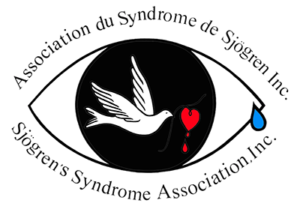The History of Henrick Sjögren
In 1882, T. Leber, in his lecture “About the Origin of the Retinal Detachment”, described a disease characterized by a dry inflammation of the cornea or the cornea and conjunctiva, respectively, with filamentous formations from increasingly scaly corneal epithelium formed to filaments due to the lid reflex. He spoke about keratitis filamentosa (filamentous keratitis).
A few years later, at the beginning of 1888, the surgeon Dr. Johann Mikulicz reported to the Society for Scientific Medicine in Koenigsberg the case of a 42-year-old farmer presenting with painless bilateral swelling of the lacrimal and salivary glands. After complete surgical excision of the lacrimal glands, as well as both submaxillary glands, the patient seemed to feel better – he returned to work. In the same year, the patient unexpectedly died of peritonitis. The bilateral swelling of the lacrimal and salivary glands, with simultaneous ceasing of lacrimation and dryness of mouth was called Mikulic’s disease. On March 9 of the same year, in London, Dr. W. B. Hadden discussed before the Clinical Society the case study of a 65-year-old woman who complained of several months of dry mouth. She had a dry mouth, was nearly unable to swallow, her tongue was red, absolutely dry and cracked in all directions like a “crocodile’s skin”. No tears appeared when she tried to cry. Hadden reported that the situation was improved by treatment with pilocarpine (an alkaloid for stimulating the secretion of saliva, sweat and tears).
Moreover, further reports about comparable clinical cases were published by Hutchinson in England and Fischer in Germany in 1888. Eleven years later, one hundred years ago, the man who was later to give the disease his name was born. Henrik Sjögren was born near Stockholm in 1899. He studied at the Karolinska Institute in Stockholm and graduated as a medical doctor in 1927.
In 1930, he examined a female patient suffering from arthritis with extreme dryness of the eyes and the mouth. When he gave his report to the ophthalmological society, Sjögren heard that the syndrome was unknown to his older colleagues.
Becoming curious, he pounced on the literature. He found the reports mentioned above as well as a publication by Stock in Tübingen (1924) about keratoconjunctivitis sicca in patients with extreme dryness of the mouth. He also came upon the publications by Mulock Houwer (1927) about the combination of injuries of the cornea and chronic polyarthritis, who grouped these manifestations into a syndrome. Sjögren was firmly convinced that his “sicca syndrome” was a systemic disease.

Sjögren
1899-1986
In 1933, he published a monograph about 19 patients with dry eyes, thirteen of whom suffered from arthritis. This study was completed with great help from his wife, Maria, who worked as an ophthalmologist in the Seraphim Hospital nearby, and who found the patients for the study.
In order to diagnose the degree of injury of the cornea, Sjögren used rose bengal (tetraiodo-tetrachlor-fluorescein), though in a less concentrated, and therefore more harmless solution than usually applied at that time (one percent). Additionally, he employed keratoscopy and the Schirmer’s test in order to measure lacrimation.
Nowadays all these tests are still employed in order to diagnose Sjögren’s syndrome. For describing the participation of the eyes, he used the term “keratoconjunctivitis sicca” which became established in the medical world.
In 1935, Sjögren became superintendent of the first ophthalmology unit at the county hospital in Jönköping where he developed techniques for corneal tranplantation. He hardly ever found time to continue his scientific work on the sicca syndrome. In 1943, the Australian ophthalmologist Bruce Hamilton translated Sjögren’s dissertation “Zur Kenntnis der Keratoconjunctivitis sicca” from German into English, and invited Sjögren to give a lecture in Australia. This gave him an impulse to resume his work. He attended a number of international symposia, and gave lectures about his earlier results. The international medical world became aware of the sicca syndrome, and several study groups began to work on the topic. A group of rheumatologists of the National Institute of Health in Bethesda, headed by Joseph J. Bunim, was especially interested in the systemic character of Sjörgen’s syndrome, and could fundamentally contribute to the understanding of the disease.
From 1957, Sjögren moved to Gothenburg University, received a docent title and, in 1961, became professor. At the age of 77, he was made a honorary member of the Swedish Rheumatological Society and attended the First International Symposium on Sjögren’s Syndrome. In September, 1986, Henrik Sjögren died at the age of 87 after several years disability because of a stroke.
The question remained whether in 1888, Johann Mikulicz had described the same syndrome as Henrik Sjögren did 42 years later. In 1954, Morgan and Castleman carefully compared the first descriptions in their pathologic details, and concluded that Mikulicz’s disease with its chronic enlargement of the lacrimal and salivary glands was a variation of the bigger complex of symptoms which is nowadays called Sjögren’s syndrome.
Article written by: Nina Olschowka
